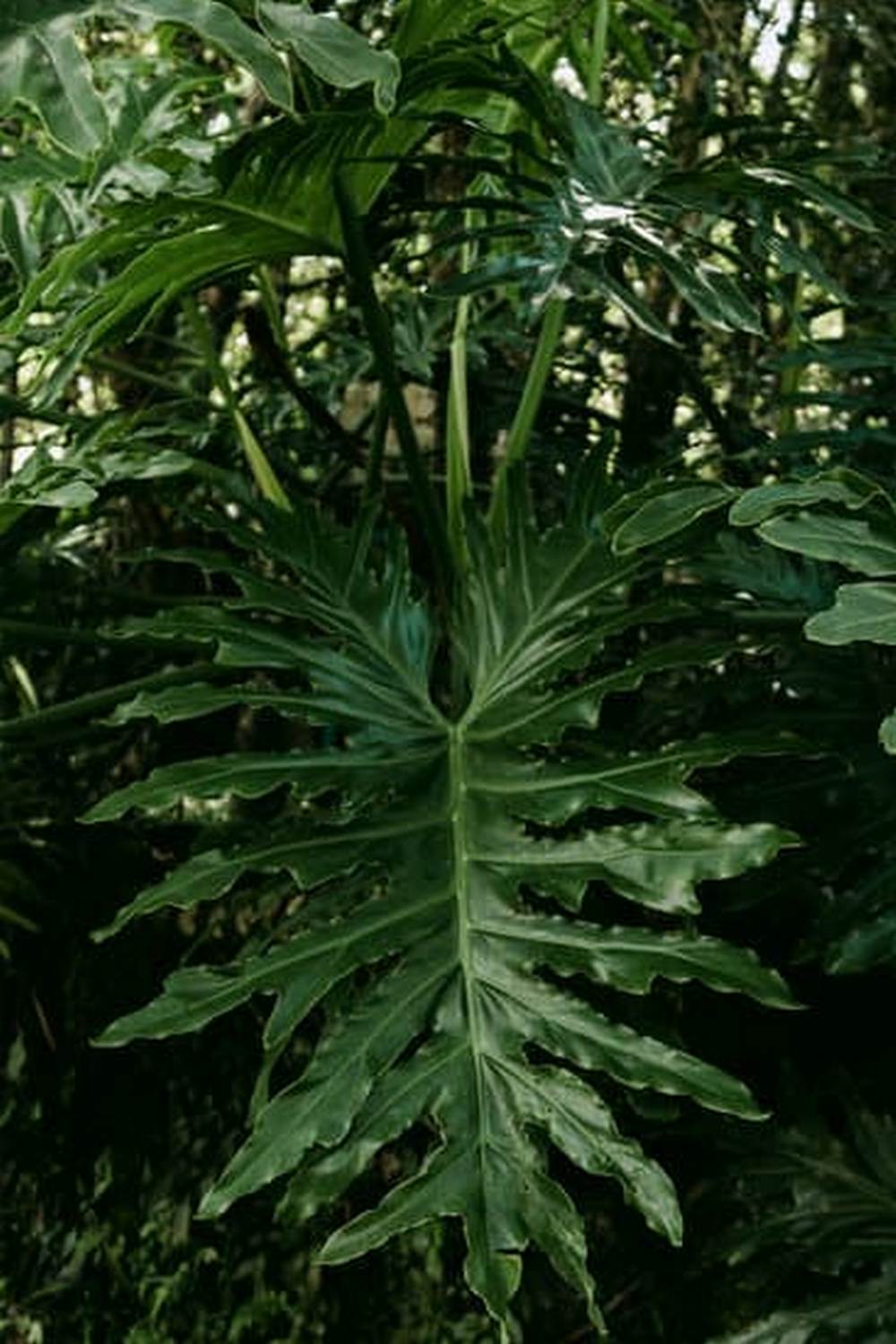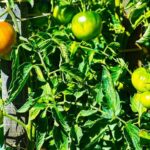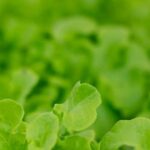Shade gardens offer a unique set of challenges when it comes to growing vegetables, but with the right knowledge and techniques, it is definitely possible to have a productive garden in shaded areas. In this article, we will explore the concept of shade gardens and provide valuable insights on how to successfully grow vegetables in these conditions.
When it comes to gardening, shade is often considered a deterrent for vegetable growth. However, with the proper understanding of different types of shade – such as full shade, partial shade, and dappled shade – and their effects on vegetable plants, it is possible to navigate the challenges and create a thriving garden even in low-light conditions. This article aims to break down the complexities of shade gardening and offer practical guidance for vegetable gardening in shaded areas.
In this comprehensive guide, we will delve into important aspects such as choosing the right vegetables for shade gardens, understanding soil and watering requirements, implementing container gardening techniques, exploring companion planting strategies, addressing common problems and solutions related to shading gardening, as well as sharing inspiring success stories of shade garden vegetable growing experiences.
Whether you are a seasoned gardener or just starting out with your first shade garden, this article will equip you with the knowledge needed to make the most out of your shaded space and cultivate an abundant harvest of fresh vegetables.
Understanding Shade
Full Shade
Full shade refers to areas that receive no direct sunlight at all. Vegetables for shade gardens that thrive in full shade include leafy greens like spinach, lettuce, and kale, as well as root vegetables such as carrots and beets. In full shade conditions, it’s important to select vegetables that are specifically suited to low light levels.
Partial Shade
Partial shade occurs when an area receives sunlight for part of the day but is shaded for the rest. This type of shade can be a bit more forgiving for vegetable growth. Some vegetables that do well in partial shade include broccoli, cauliflower, Brussels sprouts, and certain herbs like mint, parsley, and chives.
Dappled Shade
Dappled shade is a combination of sunlight and shade caused by filtered light through trees or shrubs. In these conditions, certain vegetables can still thrive such as arugula, radishes, and certain varieties of beans. It’s important to consider the pattern of light throughout the day when choosing vegetables for dappled shade areas.
Understanding these different types of shade is crucial when selecting which vegetables to grow in a shaded garden. By carefully considering the level of sunlight each area receives, gardeners can ensure they choose the right vegetables for their specific growing conditions.
Choosing the Right Vegetables
When it comes to choosing the right vegetables for shade gardens, it’s important to understand that not all plants thrive in low-light conditions. However, there are specific vegetables that actually grow quite well in shady areas. Leafy greens like spinach, kale, and lettuce are excellent choices for shade gardens. These vegetables can tolerate less sunlight and actually prefer cooler temperatures, making them a perfect fit for shaded areas.
Another group of vegetables that do well in shade gardens is root vegetables such as carrots, beets, and radishes. These plants focus their energy on developing their underground parts rather than growing tall foliage, which makes them more adaptable to limited light conditions. Root vegetables also benefit from the cooler environment provided by shade.
Additionally, herbs are a great option for planting in shady spots. Herbs like mint, cilantro, and parsley can thrive in partial shade and still provide an abundance of flavorful leaves for your culinary needs. Their versatility and ability to grow in less sunny areas make them an ideal addition to any shade garden.
In summary, while some vegetables may struggle to prosper without adequate sunlight, there are a variety of options for those looking to grow a productive vegetable garden in shaded areas. By choosing leafy greens, root vegetables, and herbs specifically suited for low-light conditions, you can still enjoy a bountiful harvest from your shade garden.
| Vegetable Type | Examples |
|---|---|
| Leafy Greens | Spinach, Kale, Lettuce |
| Root Vegetables | Carrots, Beets, Radishes |
| Herbs | Mint,Cilantro,Parsley |
Soil and Watering Requirements
When it comes to growing vegetables in shade gardens, soil and watering requirements are crucial for their success. In shady areas, the soil tends to retain more moisture due to limited sunlight, making it essential to have well-draining soil to prevent waterlogged roots and potential rot. Additionally, proper watering techniques are necessary to ensure that the vegetables receive enough moisture without being overwatered.
One key component of well-draining soil is the addition of organic matter such as compost, leaf mold, or peat moss. These materials help improve soil structure and drainage, allowing excess water to pass through while retaining enough moisture for the plants. It is also important to avoid compacting the soil in shade gardens, as this can further hinder drainage and root growth.
In terms of watering techniques for vegetables in shade gardens, it is important to monitor the moisture levels regularly. While these areas may receive less direct sunlight, they still require consistent watering, especially during dry periods. To prevent overwatering, it is beneficial to use mulch around the base of the plants to retain moisture and reduce evaporation.
Lastly, choosing the right containers for shade garden vegetables can also contribute to proper soil drainage and watering. Selecting containers with adequate drainage holes and using a high-quality potting mix can help create optimal growing conditions for vegetables in shady areas. By paying close attention to soil and watering requirements, gardeners can set their shade garden vegetables up for success.
| Shade Garden Vegetable | Ideal Soil Type |
|---|---|
| Spinach | Well-draining loamy soil |
| Radishes | Sandy or loamy soil with good drainage |
| Parsley | Rich, well-draining soil |
Container Gardening
When it comes to growing vegetables in shady areas, container gardening can be a game-changer. Whether you have limited space or simply want more control over the growing conditions, containers offer a versatile solution for cultivating vegetables in shade gardens. Here are some tips and tricks for successfully growing vegetables in containers in shady areas.
Choosing the Right Containers
The first step in container gardening for shade vegetables is selecting the right containers. Opt for pots or containers that are at least 12 inches deep to allow for proper root growth. Additionally, ensure that the containers have drainage holes to prevent waterlogging, which can be particularly problematic in shady areas where soil may take longer to dry out.
Selecting the Ideal Vegetables
Certain vegetables are better suited for container gardening in shaded areas than others. Leafy greens like spinach, lettuce, and kale thrive in lower light conditions and can do well in containers. Root vegetables such as radishes and carrots also adapt well to container gardening and are suitable for shadier spots. Additionally, herbs like cilantro and parsley can flourish with less sunlight, making them excellent choices for container planting in shade gardens.
Care and Maintenance
Proper care and maintenance are crucial for successful vegetable cultivation in containers within shade gardens. Regular watering is essential, as containers tend to dry out quicker than garden beds, especially in shady areas where evaporation rates may be lower. Moreover, supplementing with organic fertilizers such as compost or fish emulsion can provide the necessary nutrients for healthy vegetable growth without relying on direct sunlight.
By following these tips and tricks for container gardening of vegetables in shady areas, you can create a thriving mini-garden filled with leafy greens, root vegetables, and herbs even in spaces with limited sunlight availability.
Companion Planting
One of the key benefits of companion planting in shade gardens is the ability to optimize space and resources. For example, interplanting tall, sun-loving vegetables like tomatoes or peppers with shorter, shade-tolerant plants such as leafy greens or herbs can make the most efficient use of available sunlight. Additionally, some companion plants have natural pest-repelling properties or can attract beneficial insects that can help control pests in a shade garden environment.
In addition to maximizing space and natural pest control, companion planting in shade gardens can also improve soil health and fertility. Certain companion plants have deep root systems that can help break up compacted soil and improve its structure, allowing better water retention and nutrient uptake for all plants in the garden.
Furthermore, some companion plants are nitrogen-fixing legumes that can enrich the soil with this essential nutrient, benefiting neighboring vegetables in the process. Overall, understanding how different plant species interact with each other through companion planting can be a valuable tool for successful vegetable gardening in shady areas.
Common Problems and Solutions
When it comes to growing vegetables in shade gardens, there are common problems that many gardeners encounter. Lack of sunlight, pests, and diseases are some of the issues that can hinder the growth and productivity of vegetables in shady areas. However, with the right knowledge and techniques, these challenges can be addressed effectively.
One of the most common problems in shade gardens is the lack of sunlight. Without adequate sunlight, vegetables may struggle to thrive and produce a bountiful harvest. To address this issue, consider choosing vegetables that are well-suited for shade, such as leafy greens like lettuce and spinach, or root vegetables like carrots and beets. These varieties are more tolerant of lower light conditions and can still provide a satisfying yield.
Pests and diseases can also pose a threat to vegetables in shade gardens. Common garden pests like aphids and slugs thrive in damp and shady environments, making them a potential problem for shade-grown vegetables. To combat this issue, consider implementing companion planting techniques by growing pest-repellent plants alongside your vegetables for shade gardens.
For example, planting aromatic herbs like basil or lavender can help deter pests while adding beauty and fragrance to your garden space. Additionally, practicing good garden hygiene by removing any diseased plant material or weeds can help prevent the spread of diseases in shady areas.
In addition to choosing the right vegetable varieties and implementing pest control measures, proper soil preparation and watering techniques are essential for success in shade gardens. Amending the soil with organic matter to improve drainage and moisture retention is crucial for growing healthy vegetables in shady areas.
Additionally, paying attention to watering needs specific to each vegetable variety is important; some plants may require more frequent watering in shady conditions to compensate for lower levels of moisture from sunlight. By addressing these common problems with practical solutions, you can overcome the challenges of growing vegetables in shade gardens and enjoy a thriving harvest.
Success Stories
In conclusion, while shade gardens can present a challenge for growing vegetables, they also offer a unique opportunity to cultivate a variety of delicious and nutritious crops. By understanding the different types of shade and choosing the right vegetables that thrive in less sunlight, gardeners can still achieve success in their shade gardens. Leafy greens, root vegetables, and herbs are just some of the options that can flourish in shaded areas.
In addition to selecting the appropriate vegetables, ensuring proper soil and watering requirements are essential for successful vegetable growth in shade gardens. Well-draining soil and attentive watering techniques are crucial factors to consider. Container gardening is also a practical option for those with limited space or areas with heavy shade.
Furthermore, companion planting can play a significant role in maximizing the productivity of vegetables in shade gardens. By strategically planting complementary species together, gardeners can promote healthier growth and increase resistance to pests and diseases. Overall, with careful planning, creativity, and perseverance, it is possible to create beautiful and productive shade gardens filled with a bountiful harvest of vegetables. These success stories serve as an inspiration for others to explore the potential of growing vegetables in shaded environments.
Frequently Asked Questions
What Veg Is Best Grown in Shade?
Some of the best vegetables to grow in shaded areas include leafy greens like spinach, lettuce, and kale. These vegetables are known for thriving in environments with limited sunlight, making them perfect for shady garden spaces.
What Vegetable Needs the Least Amount of Sunlight?
One vegetable that needs the least amount of sunlight is the mushroom. Unlike most plants, mushrooms actually prefer dark and damp environments to grow. This makes them an ideal option for areas with minimal sunlight exposure.
What Vegetables Only Need 4 Hours of Sun?
There are several vegetables that only need around 4 hours of sun each day to thrive. Some examples include root vegetables like carrots and beets, as well as certain herbs like cilantro and mint. These plants are able to produce a bountiful harvest with less sunlight compared to other vegetables.

If you’re looking to get into vegetable gardening, or are just looking for some tips on how to make your current garden better, then you’ve come to the right place! My name is Ethel and I have been gardening for years. In this blog, I’m going to share with you some of my best tips on how to create a successful vegetable garden.





